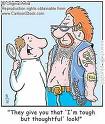Following is a list of heuristics for designing a good blog according to the website: what-makes-good-blog-design
I will use these guidelines to analyze whether Saira’s blog is well designed or needs improvement.
1. Content Should be the Focus.
Interesting content is important. I tried to make my post interesting and informative and adding images that pertained to the topic. In order to keep my visitors focused on the content, I made the content be the focal point of the design. Distracting readers with excessive images and extra items can be counterproductive. For this reason, I tried to make my designs fairly simple. Simplicity is common for blogs that want to emphasize the content.
2. Ease of Navigation.
Readers come to a blog through search engines, links from other blogs, RSS feeds, social media sites, etc. Only a small percentage of readers enter blogs through the front page. Saira’s blog doesn’t have many links from other blogs yet so finding it through a search engine is hard. I didn’t include a sidebar with navigational links which make it easier to find content.
3. Loads Quickly
Many visitors will have a very short attention span (this is really no different for blogs than traditional websites). Saira’s blog loads quickly, it is not weighted down by excessive widgets that decrease load speed. By keeping the blog clean and free of unnecessary items you can really cut down on the time it takes to load.
4. Content Start High on the Page.
Content on Saira’s blog starts higher on the page which makes it get started with the posts, and reduces excessive scrolling.
5. Memorable for Visitors.
Most blog readers visit a number of blogs each day, and many of them will feature the same (free) themes. I downloaded the free theme for Saira’s blog, so I am sure there are many blogs out there with the same design. To make my blog stand out more, I should create my own theme or buy a professionally designed theme. I did see many nice ones, but they were all pricey. If I was planning to use this blog more, I will look into buying or creating a professional design.
6. Not Overrun with Ads.
For most blogs making money with advertisements is a necessity. Even though it is important to use advertisements effectively, I did not add any ads at this point to Saira’s blog
7. Compatibility with Multiple Browsers.
Saira’s blog is functioning in both Firefox and IE.
8. Good Use of Color.
The best designs effectively use color to improve the appearance. I tried to use a theme that had an appealing colour theme which stood out. The one I picked was attractive and looked good on a black background.
9. Easy to Read.
This is really more about formatting the content of the blog than it is about a theme design. I tried to make my posts readable by using headlines, white space, lists, and bold text to make it easy for readers.
10. Important Items Should Be in Prominent Positions.
Effective design will draw the attention of readers to important items, such as subscription information. The most important links, images, etc. should generally go above the fold so that visitors will see them right away. Saira’s blog needs to improve on this as more widgets are added and more content is posted.
I decided to do a usability test on the website http://ecoki.com/ which I consider to be well designed. The information is organized so it’s easy to read and find what you are looking for fast. The space used is simple, no clutter, however large amount of information is managed well. The search box is visible and for the most part user friendly. The visual design or the aesthetics of the site is simple and uncluttered and pleasing to the eye. They have well use of color, font and graphics, and overall a good visual design that grab attention. Links are clear, the links work as planned and designed, graphics don't take long to load. The blog does not use long winded sentences or huge words. Scan-ability and readability is good.
Here is a design comparison of ecoki.com and Saira's blog.
Rollovers and tooltips with jQuery
-
I needed a quick setup for doing some rollovers and tooltips. You know, the
usual stuff, mouse over an icon changes image and shows a tooltip. I
thought ...
6 years ago





_005.jpg)

















